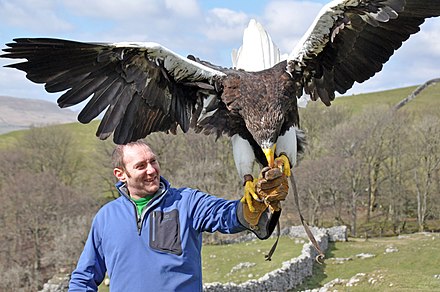Steller’s sea eagles (Haliaeetus pelagicus) are large, powerful birds of prey found in the coastal regions of northeastern Asia. These majestic birds are known for their impressive size, impressive hunting skills, and unique physical characteristics. One of the most intriguing questions about Steller’s sea eagles is whether they have teeth or not. Let’s dive in and explore the answer to this fascinating question.
No, Steller’s Sea Eagles Do Not Have Teeth
Steller’s sea eagles, like all birds, do not have teeth. Instead, they have a sharp, hooked beak that is specially adapted for tearing and ripping their prey. This beak serves as a highly effective tool for hunting and feeding, allowing them to capture and consume a wide variety of prey, including fish, small mammals, and carrion.
The Digestive System of Steller’s Sea Eagles
 Image source: stellers sea eagle
Image source: stellers sea eagle
Steller’s sea eagles have a unique digestive system that is designed to process their food without the need for teeth. Here’s a closer look at how their digestive system works:
The Beak
The beak of a Steller’s sea eagle is a powerful tool that is used to tear and rip their prey into smaller pieces. The sharp, hooked tip of the beak is perfect for grasping and tearing into the flesh of their prey.
The Crop
Once the food has been torn into smaller pieces, it is swallowed and moves down the esophagus into the crop. The crop is a specialized pouch that can store excess food, allowing the bird to digest it more slowly.
The Proventriculus
From the crop, the food moves into the proventriculus, which is the first part of the stomach. In the proventriculus, the food is softened by gastric acids, mucus, and other digestive juices.
The Gizzard
The final stage of the digestive process takes place in the gizzard, which is the lower part of the stomach. Instead of using teeth to mechanically break down the food, the gizzard uses small rocks, shells, and sand that the bird has intentionally ingested to grind and crush the food.
The Diet of Steller’s Sea Eagles
Steller’s sea eagles are opportunistic predators and will eat a wide variety of prey. Their primary food source is salmon, which they catch from the water using their powerful talons and beak. However, in some regions, such as the Japanese island of Hokkaido, they may also feed on Alaskan pollock and cod.
In addition to fish, Steller’s sea eagles will also hunt small mammals, such as hare and musk beaver, as well as scavenge on the carcasses of seals and sea lions. They are also known to steal catches from other birds, demonstrating their adaptability and resourcefulness.
Conclusion
In conclusion, Steller’s sea eagles do not have teeth, but their unique digestive system and specialized beak allow them to effectively capture, tear, and consume a wide variety of prey. This adaptation has enabled these impressive birds of prey to thrive in the coastal regions of northeastern Asia, where they play a vital role in the local ecosystem.
References:
- Eurasia Wilds – Toronto Zoo. https://www.torontozoo.com/EducationAndCamps/Elementary/Self-guidedTourScripts/Eurasia%20Self-guided%20Tour-%20Junior.pdf
- Eurasia Wilds – Toronto Zoo. https://www.torontozoo.com/EducationAndCamps/Elementary/Self-guidedTourScripts/Eurasia%20Wilds%20Self-guided%20Tour-%20Primary.pdf
- Fact Animal. https://factanimal.com/stellers-sea-eagle/
- Carnivora. https://carnivora.net/stellers-sea-eagle-haliaeetus-pelagicus-t2363.html
- Our Fine-Feathered Friends. https://ourfinefeatheredfriends.com/2014/02/16/tooth-of-the-matter-sawbills-harken-back-to-days-when-birds-still-had-teeth/.

